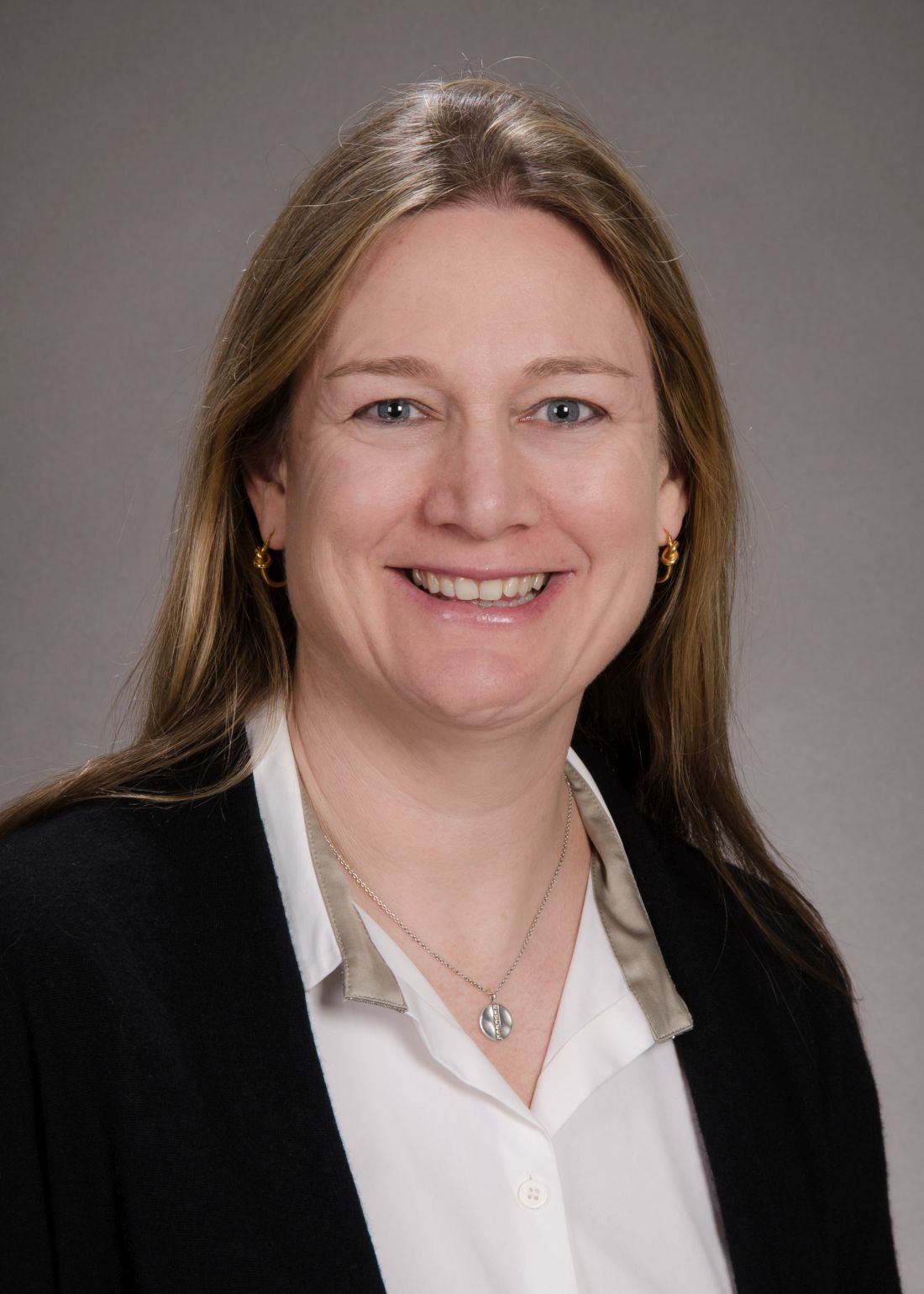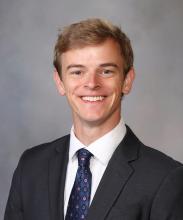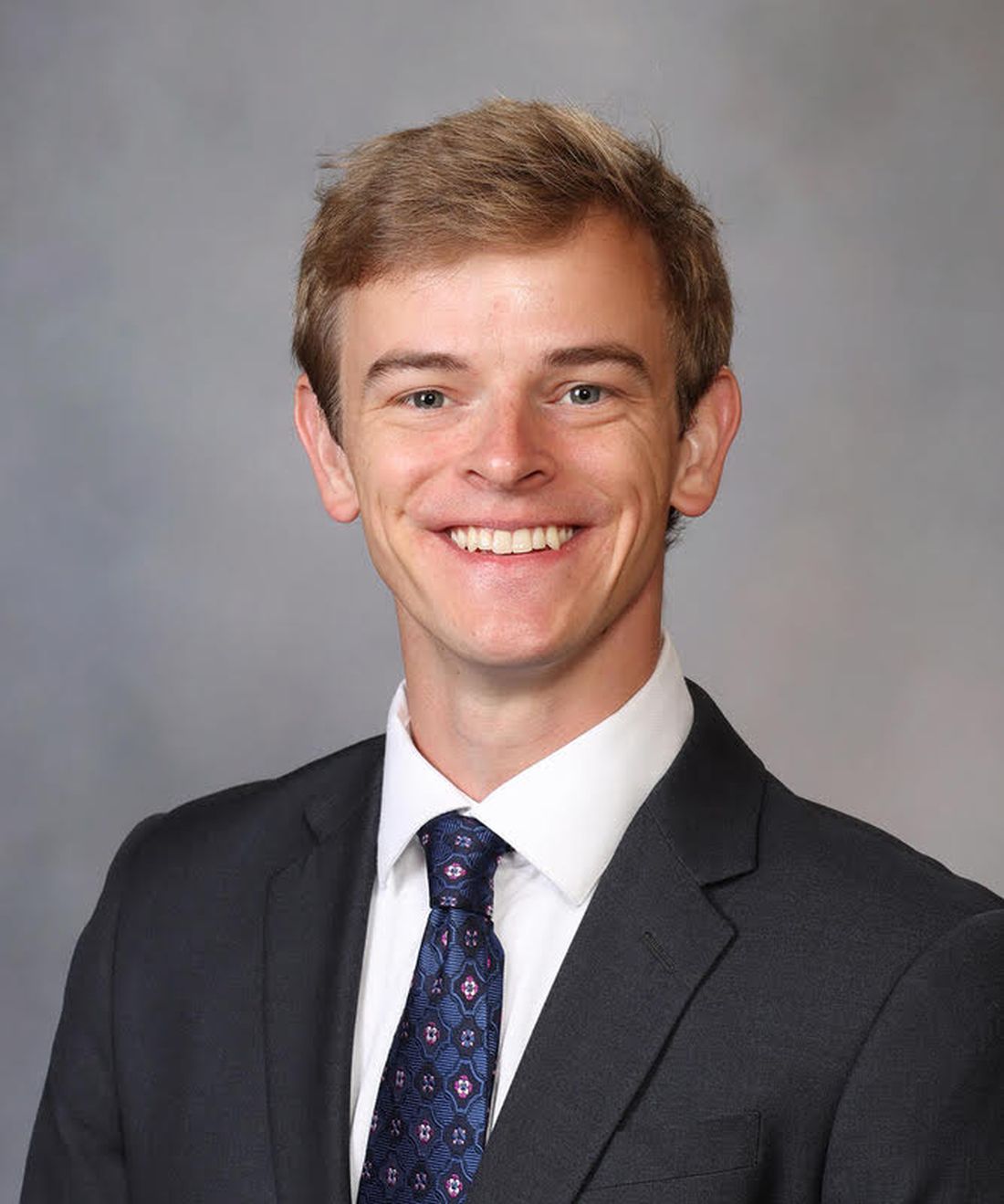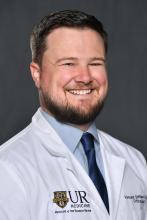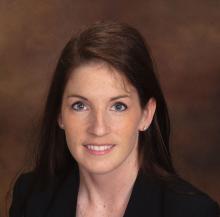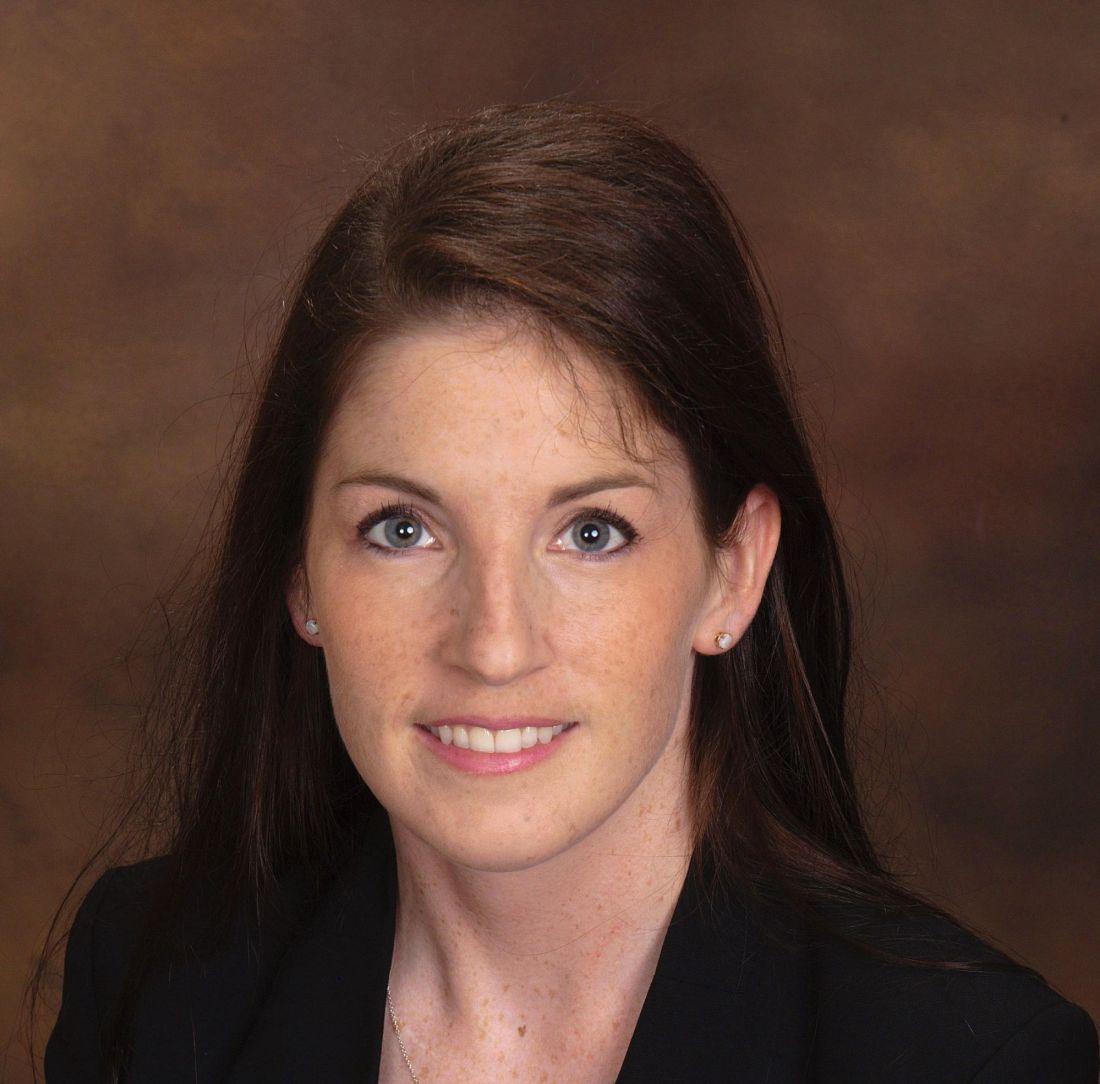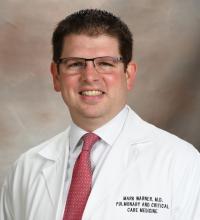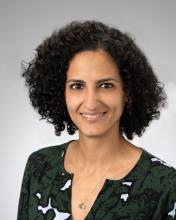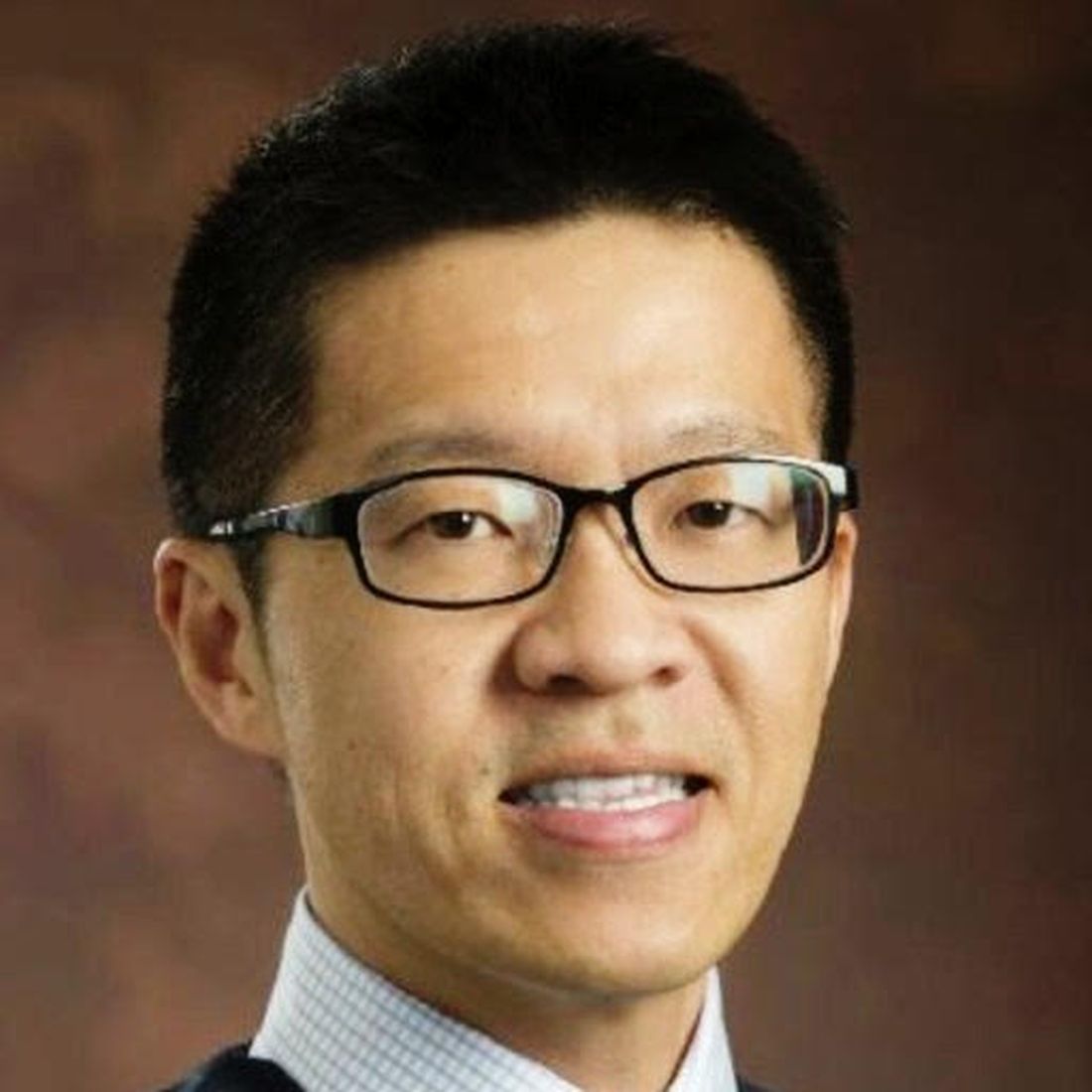User login
Let’s Mingle at DDW
We are looking forward to seeing you in our hometown for Digestive Disease Week® (DDW) 2024!
As you plan your schedule, here’s a listing of AGA’s free networking events. For more details and featured programming, visit www.gastro.org/DDW.
Meetups at AGA Central (L Street Bridge)
Network with like-minded attendees, build your #AGAGastroSquad and enjoy refreshments at our meetups.
Saturday, May 18
- 3 p.m.: Advocacy champions meetup – A “thank you” for everyone who supported our grassroots advocacy efforts this year!
Sunday, May 19
- 11 a.m.: NPPA meetup
- 1 p.m.: Dietitian meetup
- 3 p.m.: IBD meetup – Happy World IBD Day!
Monday, May 20
- 11 a.m.: Trainee meetup – Mingle with AGA journal editors!
- 1 p.m.: Psychologists meetup
- 3 p.m.: Clinician meetup
Tuesday, May 21
- 11 a.m.: Innovator meetup
RSVP and add to your calendar: www.signupgenius.com/go/10C0E4EA4AE2DA2F5C43-48529281-agacentral#/
Additional events for trainees
We have more opportunities for you to network at DDW! The following events all take place on Sunday, May 19.
- 10 a.m.: Live recording: Small Talk, Big Topics – Mingle with fellow trainees and early career GIs during a live recording of AGA’s podcast. Our hosts will interview fellowship program director Dr. Janice Jou.
[Location: AGA Central (L Street Bridge)]
- 1 p.m.: Meet-the-Experts: AGA Leadership – Held in the DDW Trainee and Early Career Lounge, these sessions are an opportunity for early career attendees to get tips from those further along in their career.
[Location: DDW Trainee and Early Career Lounge]
- 2 p.m.: AGA/DHPA Networking Hour – Join us for an hour of guided networking and 4-way Jeopardy!
[Location: DDW Trainee and Early Career Lounge]
We are looking forward to seeing you in our hometown for Digestive Disease Week® (DDW) 2024!
As you plan your schedule, here’s a listing of AGA’s free networking events. For more details and featured programming, visit www.gastro.org/DDW.
Meetups at AGA Central (L Street Bridge)
Network with like-minded attendees, build your #AGAGastroSquad and enjoy refreshments at our meetups.
Saturday, May 18
- 3 p.m.: Advocacy champions meetup – A “thank you” for everyone who supported our grassroots advocacy efforts this year!
Sunday, May 19
- 11 a.m.: NPPA meetup
- 1 p.m.: Dietitian meetup
- 3 p.m.: IBD meetup – Happy World IBD Day!
Monday, May 20
- 11 a.m.: Trainee meetup – Mingle with AGA journal editors!
- 1 p.m.: Psychologists meetup
- 3 p.m.: Clinician meetup
Tuesday, May 21
- 11 a.m.: Innovator meetup
RSVP and add to your calendar: www.signupgenius.com/go/10C0E4EA4AE2DA2F5C43-48529281-agacentral#/
Additional events for trainees
We have more opportunities for you to network at DDW! The following events all take place on Sunday, May 19.
- 10 a.m.: Live recording: Small Talk, Big Topics – Mingle with fellow trainees and early career GIs during a live recording of AGA’s podcast. Our hosts will interview fellowship program director Dr. Janice Jou.
[Location: AGA Central (L Street Bridge)]
- 1 p.m.: Meet-the-Experts: AGA Leadership – Held in the DDW Trainee and Early Career Lounge, these sessions are an opportunity for early career attendees to get tips from those further along in their career.
[Location: DDW Trainee and Early Career Lounge]
- 2 p.m.: AGA/DHPA Networking Hour – Join us for an hour of guided networking and 4-way Jeopardy!
[Location: DDW Trainee and Early Career Lounge]
We are looking forward to seeing you in our hometown for Digestive Disease Week® (DDW) 2024!
As you plan your schedule, here’s a listing of AGA’s free networking events. For more details and featured programming, visit www.gastro.org/DDW.
Meetups at AGA Central (L Street Bridge)
Network with like-minded attendees, build your #AGAGastroSquad and enjoy refreshments at our meetups.
Saturday, May 18
- 3 p.m.: Advocacy champions meetup – A “thank you” for everyone who supported our grassroots advocacy efforts this year!
Sunday, May 19
- 11 a.m.: NPPA meetup
- 1 p.m.: Dietitian meetup
- 3 p.m.: IBD meetup – Happy World IBD Day!
Monday, May 20
- 11 a.m.: Trainee meetup – Mingle with AGA journal editors!
- 1 p.m.: Psychologists meetup
- 3 p.m.: Clinician meetup
Tuesday, May 21
- 11 a.m.: Innovator meetup
RSVP and add to your calendar: www.signupgenius.com/go/10C0E4EA4AE2DA2F5C43-48529281-agacentral#/
Additional events for trainees
We have more opportunities for you to network at DDW! The following events all take place on Sunday, May 19.
- 10 a.m.: Live recording: Small Talk, Big Topics – Mingle with fellow trainees and early career GIs during a live recording of AGA’s podcast. Our hosts will interview fellowship program director Dr. Janice Jou.
[Location: AGA Central (L Street Bridge)]
- 1 p.m.: Meet-the-Experts: AGA Leadership – Held in the DDW Trainee and Early Career Lounge, these sessions are an opportunity for early career attendees to get tips from those further along in their career.
[Location: DDW Trainee and Early Career Lounge]
- 2 p.m.: AGA/DHPA Networking Hour – Join us for an hour of guided networking and 4-way Jeopardy!
[Location: DDW Trainee and Early Career Lounge]
We Have a New Congressional Champion in the Fight Against CRC!
Rep. Yadira Caraveo, MD (D-CO), recently introduced the Colorectal Cancer Early Detection Act along with Reps. Donald Payne Jr. (D-NJ), Haley Stevens (D-MI), and Terri Sewell (D-AL).
The Colorectal Cancer Early Detection Act would award grants to states to promote colorectal cancer prevention and early detection efforts to individuals under age 45.
Grants would be used to:
- Screen increased risk and high-risk individuals under age 45 for colorectal cancer.
- Provide appropriate referrals for medical treatment.
- Develop and carry out a public education and awareness campaign for the detection and control of CRC.
- Improve the education and training of health providers in detecting and controlling CRC.
- Establish mechanisms through which states can monitor the quality of CRC screening procedures.
- Develop strategies to assess family history and genetic predispositions to CRC.
- Design patient and clinician decision support tools for CRC.
- Conduct surveillance to determine other risk factors for CRC in this population.
“Colorectal cancer is the second-leading cause of cancer death in the US and is increasing at an alarming rate in younger people. AGA celebrates Rep. Caraveo’s work to address this trend through education and awareness” said Barbara Jung, MD, AGA President.
We look forward to working with our congressional champions to increase screening rates and reverse the trend of early onset colorectal cancer!
Rep. Yadira Caraveo, MD (D-CO), recently introduced the Colorectal Cancer Early Detection Act along with Reps. Donald Payne Jr. (D-NJ), Haley Stevens (D-MI), and Terri Sewell (D-AL).
The Colorectal Cancer Early Detection Act would award grants to states to promote colorectal cancer prevention and early detection efforts to individuals under age 45.
Grants would be used to:
- Screen increased risk and high-risk individuals under age 45 for colorectal cancer.
- Provide appropriate referrals for medical treatment.
- Develop and carry out a public education and awareness campaign for the detection and control of CRC.
- Improve the education and training of health providers in detecting and controlling CRC.
- Establish mechanisms through which states can monitor the quality of CRC screening procedures.
- Develop strategies to assess family history and genetic predispositions to CRC.
- Design patient and clinician decision support tools for CRC.
- Conduct surveillance to determine other risk factors for CRC in this population.
“Colorectal cancer is the second-leading cause of cancer death in the US and is increasing at an alarming rate in younger people. AGA celebrates Rep. Caraveo’s work to address this trend through education and awareness” said Barbara Jung, MD, AGA President.
We look forward to working with our congressional champions to increase screening rates and reverse the trend of early onset colorectal cancer!
Rep. Yadira Caraveo, MD (D-CO), recently introduced the Colorectal Cancer Early Detection Act along with Reps. Donald Payne Jr. (D-NJ), Haley Stevens (D-MI), and Terri Sewell (D-AL).
The Colorectal Cancer Early Detection Act would award grants to states to promote colorectal cancer prevention and early detection efforts to individuals under age 45.
Grants would be used to:
- Screen increased risk and high-risk individuals under age 45 for colorectal cancer.
- Provide appropriate referrals for medical treatment.
- Develop and carry out a public education and awareness campaign for the detection and control of CRC.
- Improve the education and training of health providers in detecting and controlling CRC.
- Establish mechanisms through which states can monitor the quality of CRC screening procedures.
- Develop strategies to assess family history and genetic predispositions to CRC.
- Design patient and clinician decision support tools for CRC.
- Conduct surveillance to determine other risk factors for CRC in this population.
“Colorectal cancer is the second-leading cause of cancer death in the US and is increasing at an alarming rate in younger people. AGA celebrates Rep. Caraveo’s work to address this trend through education and awareness” said Barbara Jung, MD, AGA President.
We look forward to working with our congressional champions to increase screening rates and reverse the trend of early onset colorectal cancer!
Can VAP be prevented? New data suggest so
Chest Infections and Disaster Response Network
Chest Infections Section
The efficacy of prophylactic antibiotics in the prevention of VAP has been the subject of several studies in recent years. Three large randomized controlled trials, all published since late 2022, have investigated whether antibiotics can prevent VAP and the optimal method of antibiotic administration.
In the AMIKINHAL trial, patients intubated for at least 72 hours in 19 ICUs in France received inhaled amikacin at a dose of 20 mg/kg/day for 3 days.1 Compared with placebo, there was a statistically significant, 7% absolute risk reduction in rate of VAP at 28 days.
In the SUDDICU trial, patients suspected to be intubated for at least 48 hours in 19 ICUs in Australia received a combination of oral paste and gastric suspension containing colistin, tobramycin, and nystatin every 6 hours along with 4 days of intravenous antibiotics.2 There was no difference in the primary outcome of 90-day all-cause mortality; however, there was a statistically significant, 12% reduction in the isolation of antibiotic-resistant organisms in cultures.
In the PROPHY-VAP trial, patients with acute brain injury (Glasgow Coma Scale score [GCS ] ≤12) intubated for at least 48 hours in 9 ICUs in France received a single dose of intravenous ceftriaxone (2 g) within 12 hours of intubation.3 There was an 18% absolute risk reduction in VAP from days 2 to 7 post-ventilation.
These trials, involving distinct patient populations and interventions, indicate that antibiotic prophylaxis may reduce VAP risk under specific circumstances, but its effect on overall outcomes is still uncertain. The understanding of prophylactic antibiotics in VAP prevention is rapidly evolving.
References
1. Ehrmann S, et al. N Engl J Med. 2023;389(22):2052-2062.
2. Myburgh JA, et al. JAMA. 2022;328(19):1911-1921.
3. Dahyot-Fizelier C, et al. Lancet Respir Med. 2024;S2213-2600(23):00471-X.
Chest Infections and Disaster Response Network
Chest Infections Section
The efficacy of prophylactic antibiotics in the prevention of VAP has been the subject of several studies in recent years. Three large randomized controlled trials, all published since late 2022, have investigated whether antibiotics can prevent VAP and the optimal method of antibiotic administration.
In the AMIKINHAL trial, patients intubated for at least 72 hours in 19 ICUs in France received inhaled amikacin at a dose of 20 mg/kg/day for 3 days.1 Compared with placebo, there was a statistically significant, 7% absolute risk reduction in rate of VAP at 28 days.
In the SUDDICU trial, patients suspected to be intubated for at least 48 hours in 19 ICUs in Australia received a combination of oral paste and gastric suspension containing colistin, tobramycin, and nystatin every 6 hours along with 4 days of intravenous antibiotics.2 There was no difference in the primary outcome of 90-day all-cause mortality; however, there was a statistically significant, 12% reduction in the isolation of antibiotic-resistant organisms in cultures.
In the PROPHY-VAP trial, patients with acute brain injury (Glasgow Coma Scale score [GCS ] ≤12) intubated for at least 48 hours in 9 ICUs in France received a single dose of intravenous ceftriaxone (2 g) within 12 hours of intubation.3 There was an 18% absolute risk reduction in VAP from days 2 to 7 post-ventilation.
These trials, involving distinct patient populations and interventions, indicate that antibiotic prophylaxis may reduce VAP risk under specific circumstances, but its effect on overall outcomes is still uncertain. The understanding of prophylactic antibiotics in VAP prevention is rapidly evolving.
References
1. Ehrmann S, et al. N Engl J Med. 2023;389(22):2052-2062.
2. Myburgh JA, et al. JAMA. 2022;328(19):1911-1921.
3. Dahyot-Fizelier C, et al. Lancet Respir Med. 2024;S2213-2600(23):00471-X.
Chest Infections and Disaster Response Network
Chest Infections Section
The efficacy of prophylactic antibiotics in the prevention of VAP has been the subject of several studies in recent years. Three large randomized controlled trials, all published since late 2022, have investigated whether antibiotics can prevent VAP and the optimal method of antibiotic administration.
In the AMIKINHAL trial, patients intubated for at least 72 hours in 19 ICUs in France received inhaled amikacin at a dose of 20 mg/kg/day for 3 days.1 Compared with placebo, there was a statistically significant, 7% absolute risk reduction in rate of VAP at 28 days.
In the SUDDICU trial, patients suspected to be intubated for at least 48 hours in 19 ICUs in Australia received a combination of oral paste and gastric suspension containing colistin, tobramycin, and nystatin every 6 hours along with 4 days of intravenous antibiotics.2 There was no difference in the primary outcome of 90-day all-cause mortality; however, there was a statistically significant, 12% reduction in the isolation of antibiotic-resistant organisms in cultures.
In the PROPHY-VAP trial, patients with acute brain injury (Glasgow Coma Scale score [GCS ] ≤12) intubated for at least 48 hours in 9 ICUs in France received a single dose of intravenous ceftriaxone (2 g) within 12 hours of intubation.3 There was an 18% absolute risk reduction in VAP from days 2 to 7 post-ventilation.
These trials, involving distinct patient populations and interventions, indicate that antibiotic prophylaxis may reduce VAP risk under specific circumstances, but its effect on overall outcomes is still uncertain. The understanding of prophylactic antibiotics in VAP prevention is rapidly evolving.
References
1. Ehrmann S, et al. N Engl J Med. 2023;389(22):2052-2062.
2. Myburgh JA, et al. JAMA. 2022;328(19):1911-1921.
3. Dahyot-Fizelier C, et al. Lancet Respir Med. 2024;S2213-2600(23):00471-X.
Complexity of hemodynamic assessment in patients with cirrhosis and septic shock
Critical Care Network
Nonrespiratory Critical Care Section
In patients with decompensated cirrhosis, there are multiple intrahepatic and extrahepatic factors contributing to hemodynamic alterations at baseline, including endothelial cell dysfunction, hepatic stellate cell activation promoting increase in vasoconstrictors, decrease in vasodilators, and angiogenesis leading to worsening of portal hypertension. Increased resistance to hepatic blood flow leads to increased production of nitric oxide and other vasodilators leading to splanchnic vasodilation, decreased effective blood volume, activation of the renin angiotensin system, sodium, and water retention. In addition to portal hypertension and splanchnic vasodilation, there is a decrease in systemic vascular resistance and hyperdynamic circulation with increased cardiac output. As cirrhosis progresses to the decompensated stage, patients may develop cirrhotic cardiomyopathy, characterized by impaired cardiac response to stress, manifesting as systolic and diastolic dysfunction, and electrophysiological abnormalities such as QT prolongation leading to hypotension and dysregulated response to fluid resuscitation.
Elevated lactate levels in acutely ill patients are an independent risk factor for mortality in patients with cirrhosis. However, lactate levels >2mmol/L need not necessarily define sepsis in these patients, as these patients have decreased lactate clearance. Understanding the intricate interplay between the cardiac pump, vascular tone, and afterload is essential in managing shock in these individuals. Aggressive volume resuscitation may not be well tolerated, emphasizing the need for frequent hemodynamic assessments and prompt initiation of vasopressors when indicated.
Critical Care Network
Nonrespiratory Critical Care Section
In patients with decompensated cirrhosis, there are multiple intrahepatic and extrahepatic factors contributing to hemodynamic alterations at baseline, including endothelial cell dysfunction, hepatic stellate cell activation promoting increase in vasoconstrictors, decrease in vasodilators, and angiogenesis leading to worsening of portal hypertension. Increased resistance to hepatic blood flow leads to increased production of nitric oxide and other vasodilators leading to splanchnic vasodilation, decreased effective blood volume, activation of the renin angiotensin system, sodium, and water retention. In addition to portal hypertension and splanchnic vasodilation, there is a decrease in systemic vascular resistance and hyperdynamic circulation with increased cardiac output. As cirrhosis progresses to the decompensated stage, patients may develop cirrhotic cardiomyopathy, characterized by impaired cardiac response to stress, manifesting as systolic and diastolic dysfunction, and electrophysiological abnormalities such as QT prolongation leading to hypotension and dysregulated response to fluid resuscitation.
Elevated lactate levels in acutely ill patients are an independent risk factor for mortality in patients with cirrhosis. However, lactate levels >2mmol/L need not necessarily define sepsis in these patients, as these patients have decreased lactate clearance. Understanding the intricate interplay between the cardiac pump, vascular tone, and afterload is essential in managing shock in these individuals. Aggressive volume resuscitation may not be well tolerated, emphasizing the need for frequent hemodynamic assessments and prompt initiation of vasopressors when indicated.
Critical Care Network
Nonrespiratory Critical Care Section
In patients with decompensated cirrhosis, there are multiple intrahepatic and extrahepatic factors contributing to hemodynamic alterations at baseline, including endothelial cell dysfunction, hepatic stellate cell activation promoting increase in vasoconstrictors, decrease in vasodilators, and angiogenesis leading to worsening of portal hypertension. Increased resistance to hepatic blood flow leads to increased production of nitric oxide and other vasodilators leading to splanchnic vasodilation, decreased effective blood volume, activation of the renin angiotensin system, sodium, and water retention. In addition to portal hypertension and splanchnic vasodilation, there is a decrease in systemic vascular resistance and hyperdynamic circulation with increased cardiac output. As cirrhosis progresses to the decompensated stage, patients may develop cirrhotic cardiomyopathy, characterized by impaired cardiac response to stress, manifesting as systolic and diastolic dysfunction, and electrophysiological abnormalities such as QT prolongation leading to hypotension and dysregulated response to fluid resuscitation.
Elevated lactate levels in acutely ill patients are an independent risk factor for mortality in patients with cirrhosis. However, lactate levels >2mmol/L need not necessarily define sepsis in these patients, as these patients have decreased lactate clearance. Understanding the intricate interplay between the cardiac pump, vascular tone, and afterload is essential in managing shock in these individuals. Aggressive volume resuscitation may not be well tolerated, emphasizing the need for frequent hemodynamic assessments and prompt initiation of vasopressors when indicated.
CLAD prevention in lung transplant recipients: Tacrolimus vs cyclosporin
Diffuse Lung Disease and Lung Transplant Network
Lung Transplant Section
, accounting for around 40% of deaths.1 LTRs are typically maintained on a three-drug immunosuppressive regimen—a calcineurin inhibitor, antimetabolite agent, and corticosteroid—in order to prevent rejection. Strong randomized controlled trial-generated evidence guiding the choice of immunosuppressive therapy for LTRs is generally lacking.
A recent large, multicentered, randomized controlled trial in Scandinavia compared outcomes between once daily extended-release tacrolimus and twice daily cyclosporin.2 The target trough for cyclosporin was 250 to 300 ng/mL (0 to 3 months), 200 to 250 ng/mL (3 to 6 months), 150 to 200 ng/mL (6 to 12 months), and 100 to 150 ng/mL beyond 12 months. The trough target for tacrolimus was 10 to 14 ng/mL (0 to 3 months), 8 to 12 ng/mL (3 to 6 months), 8 to 10 ng/mL (6 to 12 months), and 6 to 8 ng/mL beyond 12 months.
The study demonstrated that immunosuppressive regimens containing tacrolimus significantly reduced incidence of CLAD diagnosis at 36 months. The cumulative incidence of CLAD was 39% in the cyclosporin group vs 13% in the tacrolimus group (P < .0001), and the number needed to treat was 3.9 patients to prevent one case of CLAD with tacrolimus. While mortality was not significantly different between the two treatment groups in the intention to treat models, tacrolimus had a mortality benefit in the per protocol analysis.
While there is no consensus guideline recommending a first-line immunosuppression regimen following lung transplantation, the lung transplant steering committee believes that additional trials comparing existing agents are of critical importance to reduce CLAD incidence and improve long-term outcomes in LTRs.
References
1. Verleden GM, et al. J Heart Lung Transplant. 2019;38(5):493-503.
2. Dellgren G, et al. Lancet Respir Med. 2024;12(1):34-44.
Diffuse Lung Disease and Lung Transplant Network
Lung Transplant Section
, accounting for around 40% of deaths.1 LTRs are typically maintained on a three-drug immunosuppressive regimen—a calcineurin inhibitor, antimetabolite agent, and corticosteroid—in order to prevent rejection. Strong randomized controlled trial-generated evidence guiding the choice of immunosuppressive therapy for LTRs is generally lacking.
A recent large, multicentered, randomized controlled trial in Scandinavia compared outcomes between once daily extended-release tacrolimus and twice daily cyclosporin.2 The target trough for cyclosporin was 250 to 300 ng/mL (0 to 3 months), 200 to 250 ng/mL (3 to 6 months), 150 to 200 ng/mL (6 to 12 months), and 100 to 150 ng/mL beyond 12 months. The trough target for tacrolimus was 10 to 14 ng/mL (0 to 3 months), 8 to 12 ng/mL (3 to 6 months), 8 to 10 ng/mL (6 to 12 months), and 6 to 8 ng/mL beyond 12 months.
The study demonstrated that immunosuppressive regimens containing tacrolimus significantly reduced incidence of CLAD diagnosis at 36 months. The cumulative incidence of CLAD was 39% in the cyclosporin group vs 13% in the tacrolimus group (P < .0001), and the number needed to treat was 3.9 patients to prevent one case of CLAD with tacrolimus. While mortality was not significantly different between the two treatment groups in the intention to treat models, tacrolimus had a mortality benefit in the per protocol analysis.
While there is no consensus guideline recommending a first-line immunosuppression regimen following lung transplantation, the lung transplant steering committee believes that additional trials comparing existing agents are of critical importance to reduce CLAD incidence and improve long-term outcomes in LTRs.
References
1. Verleden GM, et al. J Heart Lung Transplant. 2019;38(5):493-503.
2. Dellgren G, et al. Lancet Respir Med. 2024;12(1):34-44.
Diffuse Lung Disease and Lung Transplant Network
Lung Transplant Section
, accounting for around 40% of deaths.1 LTRs are typically maintained on a three-drug immunosuppressive regimen—a calcineurin inhibitor, antimetabolite agent, and corticosteroid—in order to prevent rejection. Strong randomized controlled trial-generated evidence guiding the choice of immunosuppressive therapy for LTRs is generally lacking.
A recent large, multicentered, randomized controlled trial in Scandinavia compared outcomes between once daily extended-release tacrolimus and twice daily cyclosporin.2 The target trough for cyclosporin was 250 to 300 ng/mL (0 to 3 months), 200 to 250 ng/mL (3 to 6 months), 150 to 200 ng/mL (6 to 12 months), and 100 to 150 ng/mL beyond 12 months. The trough target for tacrolimus was 10 to 14 ng/mL (0 to 3 months), 8 to 12 ng/mL (3 to 6 months), 8 to 10 ng/mL (6 to 12 months), and 6 to 8 ng/mL beyond 12 months.
The study demonstrated that immunosuppressive regimens containing tacrolimus significantly reduced incidence of CLAD diagnosis at 36 months. The cumulative incidence of CLAD was 39% in the cyclosporin group vs 13% in the tacrolimus group (P < .0001), and the number needed to treat was 3.9 patients to prevent one case of CLAD with tacrolimus. While mortality was not significantly different between the two treatment groups in the intention to treat models, tacrolimus had a mortality benefit in the per protocol analysis.
While there is no consensus guideline recommending a first-line immunosuppression regimen following lung transplantation, the lung transplant steering committee believes that additional trials comparing existing agents are of critical importance to reduce CLAD incidence and improve long-term outcomes in LTRs.
References
1. Verleden GM, et al. J Heart Lung Transplant. 2019;38(5):493-503.
2. Dellgren G, et al. Lancet Respir Med. 2024;12(1):34-44.
Eradicating uncertainty: A review of Pseudomonas aeruginosa eradication in bronchiectasis
Airways Disorders Network
Bronchiectasis Section
Bronchiectasis patients have dilated airways that are often colonized with bacteria, resulting in a vicious cycle of airway inflammation and progressive dilation. Pseudomonas aeruginosa is a frequent airway colonizer and is associated with increased morbidity and mortality in cystic fibrosis (CF) and noncystic fibrosis bronchiectasis (NCFB).1
Optimal NCFB eradication regimens remain unknown, though recent studies demonstrated inhaled tobramycin is safe and effective for chronic P. aeruginosa infections in NCFB.4
The 2024 meta-analysis by Conceiçã et al. revealed that P. aeruginosa eradication endures more than 12 months in only 40% of NCFB cases, but that patients who received combined therapy—both systemic and inhaled therapies—had a higher eradication rate at 48% compared with 27% in those receiving only systemic antibiotics.5 They found that successful eradication reduced exacerbation rate by 0.91 exacerbations per year without changing hospitalization rate. They were unable to comment on optimal antibiotic selection or duration.
A take-home point from Conceiçã et al. suggests trying to eradicate P. aeruginosa with combined systemic and inhaled antibiotics if possible, but other clinical questions remain around initial antibiotic selection and how to treat persistent P. aeruginosa.
References
1. Finch, et al. Ann Am Thorac Soc. 2015;12(11):1602-1611.
2. Polverino, et al. Eur Respir J. 2017;50:1700629.
3. Mogayzel, et al. Ann ATS. 2014;11(10):1511-1761.
4. Guan, et al. CHEST. 2023;163(1):64-76.
5. Conceiçã, et al. Eur Respir Rev. 2024;33:230178.
Airways Disorders Network
Bronchiectasis Section
Bronchiectasis patients have dilated airways that are often colonized with bacteria, resulting in a vicious cycle of airway inflammation and progressive dilation. Pseudomonas aeruginosa is a frequent airway colonizer and is associated with increased morbidity and mortality in cystic fibrosis (CF) and noncystic fibrosis bronchiectasis (NCFB).1
Optimal NCFB eradication regimens remain unknown, though recent studies demonstrated inhaled tobramycin is safe and effective for chronic P. aeruginosa infections in NCFB.4
The 2024 meta-analysis by Conceiçã et al. revealed that P. aeruginosa eradication endures more than 12 months in only 40% of NCFB cases, but that patients who received combined therapy—both systemic and inhaled therapies—had a higher eradication rate at 48% compared with 27% in those receiving only systemic antibiotics.5 They found that successful eradication reduced exacerbation rate by 0.91 exacerbations per year without changing hospitalization rate. They were unable to comment on optimal antibiotic selection or duration.
A take-home point from Conceiçã et al. suggests trying to eradicate P. aeruginosa with combined systemic and inhaled antibiotics if possible, but other clinical questions remain around initial antibiotic selection and how to treat persistent P. aeruginosa.
References
1. Finch, et al. Ann Am Thorac Soc. 2015;12(11):1602-1611.
2. Polverino, et al. Eur Respir J. 2017;50:1700629.
3. Mogayzel, et al. Ann ATS. 2014;11(10):1511-1761.
4. Guan, et al. CHEST. 2023;163(1):64-76.
5. Conceiçã, et al. Eur Respir Rev. 2024;33:230178.
Airways Disorders Network
Bronchiectasis Section
Bronchiectasis patients have dilated airways that are often colonized with bacteria, resulting in a vicious cycle of airway inflammation and progressive dilation. Pseudomonas aeruginosa is a frequent airway colonizer and is associated with increased morbidity and mortality in cystic fibrosis (CF) and noncystic fibrosis bronchiectasis (NCFB).1
Optimal NCFB eradication regimens remain unknown, though recent studies demonstrated inhaled tobramycin is safe and effective for chronic P. aeruginosa infections in NCFB.4
The 2024 meta-analysis by Conceiçã et al. revealed that P. aeruginosa eradication endures more than 12 months in only 40% of NCFB cases, but that patients who received combined therapy—both systemic and inhaled therapies—had a higher eradication rate at 48% compared with 27% in those receiving only systemic antibiotics.5 They found that successful eradication reduced exacerbation rate by 0.91 exacerbations per year without changing hospitalization rate. They were unable to comment on optimal antibiotic selection or duration.
A take-home point from Conceiçã et al. suggests trying to eradicate P. aeruginosa with combined systemic and inhaled antibiotics if possible, but other clinical questions remain around initial antibiotic selection and how to treat persistent P. aeruginosa.
References
1. Finch, et al. Ann Am Thorac Soc. 2015;12(11):1602-1611.
2. Polverino, et al. Eur Respir J. 2017;50:1700629.
3. Mogayzel, et al. Ann ATS. 2014;11(10):1511-1761.
4. Guan, et al. CHEST. 2023;163(1):64-76.
5. Conceiçã, et al. Eur Respir Rev. 2024;33:230178.
Empowering ICU physicians in MCS critical care
Pulmonary Vascular and Cardiovascular Network
Cardiovascular Medicine and Surgery Section
Intensive care physicians around the nation are pivotal in improving shock-related patient outcomes. Most intensive care units (academic and nonacademic) are currently managed by intensive care physicians, and a large majority of these physicians are either pulmonary/critical care, emergency medicine critical care, surgery critical care, or medicine/critical care.
There is lack of systematic training in cardiogenic shock across the board in these specialties as it relates to management of patients supported on extracorporeal membrane oxygenation (ECMO), left ventricular assist devices (LVADs), percutaneous devices, and intermediate devices such as centrimag devices.
By integrating comprehensive systematic training on cardiogenic shock recognition and management into educational initiatives, fellowship programs that are noncardiology-based can empower health care providers to make informed decisions and expedite life-saving interventions for patients in need of advanced cardiac support. Furthermore, the next generation of intensive care physicians may require ongoing education in the cardiac space, including additional training in point-of-care ultrasound, transesophageal echocardiography (TEE), and advanced hemodynamics, including management of alarms related to percutaneous and durable devices. Through continuous education and training both at conferences and at the simulation center in Glenview, Illinois, CHEST is especially suited to aid intensive care physicians to navigate the evolving landscape of mechanical circulatory support critical care and improve outcomes for patients in need of mechanical circulatory support.
Pulmonary Vascular and Cardiovascular Network
Cardiovascular Medicine and Surgery Section
Intensive care physicians around the nation are pivotal in improving shock-related patient outcomes. Most intensive care units (academic and nonacademic) are currently managed by intensive care physicians, and a large majority of these physicians are either pulmonary/critical care, emergency medicine critical care, surgery critical care, or medicine/critical care.
There is lack of systematic training in cardiogenic shock across the board in these specialties as it relates to management of patients supported on extracorporeal membrane oxygenation (ECMO), left ventricular assist devices (LVADs), percutaneous devices, and intermediate devices such as centrimag devices.
By integrating comprehensive systematic training on cardiogenic shock recognition and management into educational initiatives, fellowship programs that are noncardiology-based can empower health care providers to make informed decisions and expedite life-saving interventions for patients in need of advanced cardiac support. Furthermore, the next generation of intensive care physicians may require ongoing education in the cardiac space, including additional training in point-of-care ultrasound, transesophageal echocardiography (TEE), and advanced hemodynamics, including management of alarms related to percutaneous and durable devices. Through continuous education and training both at conferences and at the simulation center in Glenview, Illinois, CHEST is especially suited to aid intensive care physicians to navigate the evolving landscape of mechanical circulatory support critical care and improve outcomes for patients in need of mechanical circulatory support.
Pulmonary Vascular and Cardiovascular Network
Cardiovascular Medicine and Surgery Section
Intensive care physicians around the nation are pivotal in improving shock-related patient outcomes. Most intensive care units (academic and nonacademic) are currently managed by intensive care physicians, and a large majority of these physicians are either pulmonary/critical care, emergency medicine critical care, surgery critical care, or medicine/critical care.
There is lack of systematic training in cardiogenic shock across the board in these specialties as it relates to management of patients supported on extracorporeal membrane oxygenation (ECMO), left ventricular assist devices (LVADs), percutaneous devices, and intermediate devices such as centrimag devices.
By integrating comprehensive systematic training on cardiogenic shock recognition and management into educational initiatives, fellowship programs that are noncardiology-based can empower health care providers to make informed decisions and expedite life-saving interventions for patients in need of advanced cardiac support. Furthermore, the next generation of intensive care physicians may require ongoing education in the cardiac space, including additional training in point-of-care ultrasound, transesophageal echocardiography (TEE), and advanced hemodynamics, including management of alarms related to percutaneous and durable devices. Through continuous education and training both at conferences and at the simulation center in Glenview, Illinois, CHEST is especially suited to aid intensive care physicians to navigate the evolving landscape of mechanical circulatory support critical care and improve outcomes for patients in need of mechanical circulatory support.
Getting ready for Boston
A quality educational meeting starts with a great slate of programs tailored to its audience, and CHEST 2024 is on track to offer the highest tier of pulmonary, critical care, and sleep medicine education that attendees have come to expect from the CHEST Annual Meeting.
While planning for the meeting started with the open call for 2024 sessions at the conclusion of the CHEST Annual Meeting 2023, CHEST 2024 began to take shape when the schedule—and the curriculum chairs—came together. In mid-February, members of the Scientific Program Committee gathered in person at CHEST headquarters in Glenview, Illinois, to review submissions and solidify the schedule for the upcoming CHEST 2024 meeting, taking place in Boston, October 6 to 9.
Following CHEST 2023 in Honolulu, those planning for Boston were brimming with excitement to start planning a meeting closer to home. One event in particular that committee members are excited for will be a session dedicated to the “Black Angels,” the nurses who helped cure TB, featuring surviving member, Virginia Allen, and book (The Black Angels: The Untold Story of the Nurses Who Helped Cure Tuberculosis) author, Maria Smilios. Because of the location, both Allen and Smilios will be able to join on-site in Boston and will bring with them, for the first time on public display, a curated selection of papers from Edward Robitzek, MD, courtesy of the Robitzek family. This collection will include records of TB treatment trials that forever changed the course of the disease in 1952.
In addition to this look into the history of chest medicine, the CHEST Annual Meeting 2024 will also feature the latest advancements in the field, including the anticipated hot topic of the meeting, the use of artificial intelligence (AI) in medicine.
“There [are] going to be a lot of hot topics covered at CHEST 2024, like bronchoscopy approaches, treatments for COPD,” said Gabe Bosslet, MD, FCCP, Chair of the Scientific Program Committee. “But if there was one that sort of was the outlier this year, I think it’s artificial intelligence and its use in pulmonary and critical care medicine.”
The sessions covering AI include its presence in medical education, as well as treating interstitial lung disease, chest infections, and more.
Beyond the latest in artificial technology, the CHEST Annual Meeting 2024 will feature more than 200 sessions covering eight curriculum groups with something for everyone in chest medicine:
- Airways Disorders
- Critical Care
- Cardiovascular/Pulmonary Vascular Disease
- Chest Infections/Disaster Medicine/Systemic Disease
- Interstitial Lung Disease/Transplant
- Interdisciplinary/Practice Operations/Education
- Lung Cancer/Interventional Pulmonology/Bronchoscopy/Radiology
- Sleep Medicine
The meeting will host topics for a wide range of experience levels (from those still in training to those who are years or decades into their careers) and welcomes all members of the care team. “These are not physician-centric issues, topics, or sessions. These are sessions that if you’re working around patients with pulmonary or critical care diseases, these are definitively for you,” Dr. Bosslet said.
With something for everyone—and for the first time ever in Boston—CHEST 2024 will not be a meeting to miss. Keep an eye out for registration to open in May, as early bird pricing will be available for a short time.
Dr. Danckers’ social media takeover
For an inside look into what happens during a meeting of the Scientific Program Committee, we invited member of the committee, Mauricio Danckers, MD, FCCP, to take the reins of CHEST social media to share his experience.
Dr. Danckers posted behind-the-scenes pictures of each of the curriculum chairs and teased a picture of the completed session schedule.
To see the takeover posts, visit the CHEST Instagram (@accpCHEST) and view the CHEST 2024 story pinned to the top of the profile.
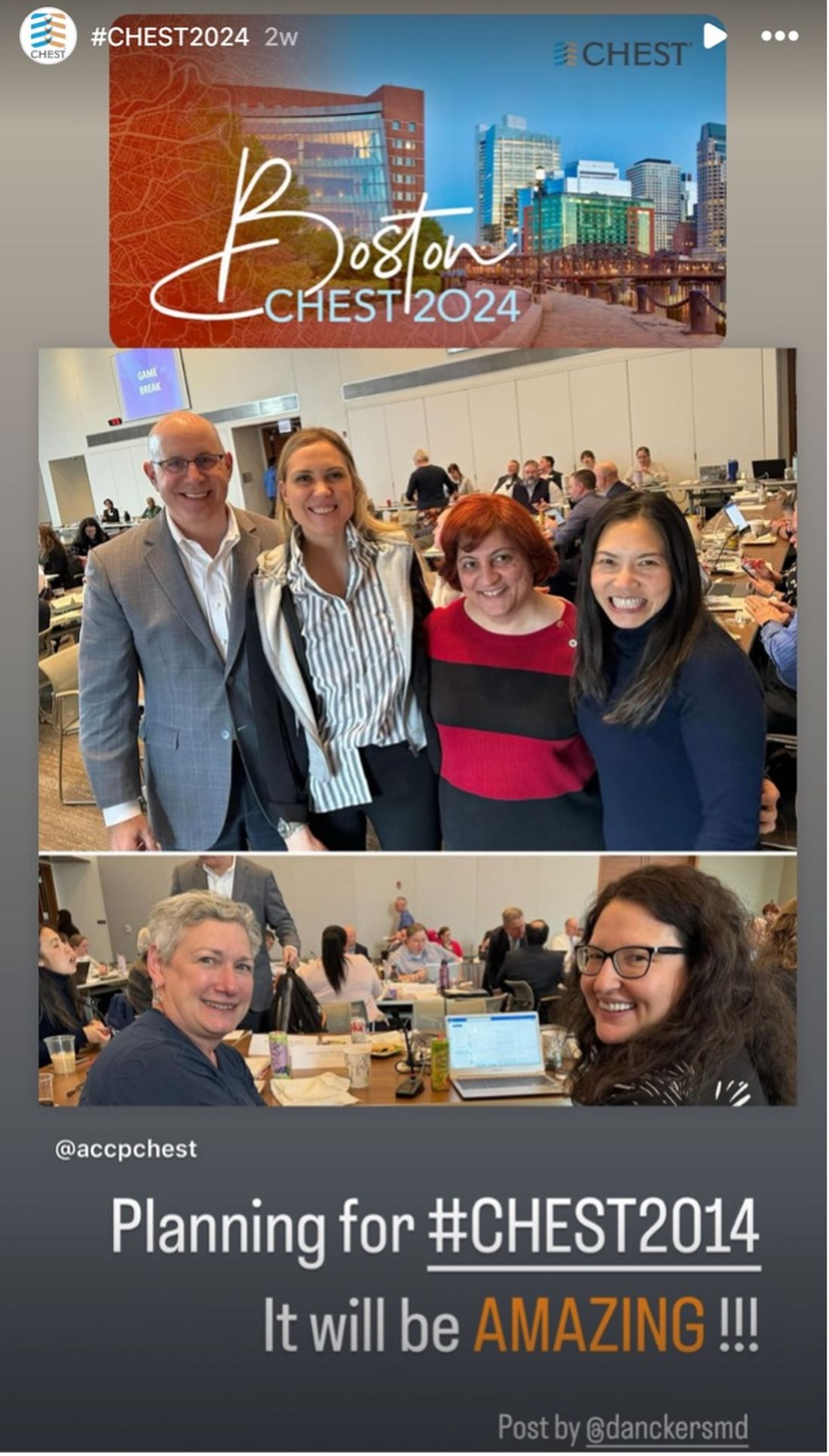

A quality educational meeting starts with a great slate of programs tailored to its audience, and CHEST 2024 is on track to offer the highest tier of pulmonary, critical care, and sleep medicine education that attendees have come to expect from the CHEST Annual Meeting.
While planning for the meeting started with the open call for 2024 sessions at the conclusion of the CHEST Annual Meeting 2023, CHEST 2024 began to take shape when the schedule—and the curriculum chairs—came together. In mid-February, members of the Scientific Program Committee gathered in person at CHEST headquarters in Glenview, Illinois, to review submissions and solidify the schedule for the upcoming CHEST 2024 meeting, taking place in Boston, October 6 to 9.
Following CHEST 2023 in Honolulu, those planning for Boston were brimming with excitement to start planning a meeting closer to home. One event in particular that committee members are excited for will be a session dedicated to the “Black Angels,” the nurses who helped cure TB, featuring surviving member, Virginia Allen, and book (The Black Angels: The Untold Story of the Nurses Who Helped Cure Tuberculosis) author, Maria Smilios. Because of the location, both Allen and Smilios will be able to join on-site in Boston and will bring with them, for the first time on public display, a curated selection of papers from Edward Robitzek, MD, courtesy of the Robitzek family. This collection will include records of TB treatment trials that forever changed the course of the disease in 1952.
In addition to this look into the history of chest medicine, the CHEST Annual Meeting 2024 will also feature the latest advancements in the field, including the anticipated hot topic of the meeting, the use of artificial intelligence (AI) in medicine.
“There [are] going to be a lot of hot topics covered at CHEST 2024, like bronchoscopy approaches, treatments for COPD,” said Gabe Bosslet, MD, FCCP, Chair of the Scientific Program Committee. “But if there was one that sort of was the outlier this year, I think it’s artificial intelligence and its use in pulmonary and critical care medicine.”
The sessions covering AI include its presence in medical education, as well as treating interstitial lung disease, chest infections, and more.
Beyond the latest in artificial technology, the CHEST Annual Meeting 2024 will feature more than 200 sessions covering eight curriculum groups with something for everyone in chest medicine:
- Airways Disorders
- Critical Care
- Cardiovascular/Pulmonary Vascular Disease
- Chest Infections/Disaster Medicine/Systemic Disease
- Interstitial Lung Disease/Transplant
- Interdisciplinary/Practice Operations/Education
- Lung Cancer/Interventional Pulmonology/Bronchoscopy/Radiology
- Sleep Medicine
The meeting will host topics for a wide range of experience levels (from those still in training to those who are years or decades into their careers) and welcomes all members of the care team. “These are not physician-centric issues, topics, or sessions. These are sessions that if you’re working around patients with pulmonary or critical care diseases, these are definitively for you,” Dr. Bosslet said.
With something for everyone—and for the first time ever in Boston—CHEST 2024 will not be a meeting to miss. Keep an eye out for registration to open in May, as early bird pricing will be available for a short time.
Dr. Danckers’ social media takeover
For an inside look into what happens during a meeting of the Scientific Program Committee, we invited member of the committee, Mauricio Danckers, MD, FCCP, to take the reins of CHEST social media to share his experience.
Dr. Danckers posted behind-the-scenes pictures of each of the curriculum chairs and teased a picture of the completed session schedule.
To see the takeover posts, visit the CHEST Instagram (@accpCHEST) and view the CHEST 2024 story pinned to the top of the profile.


A quality educational meeting starts with a great slate of programs tailored to its audience, and CHEST 2024 is on track to offer the highest tier of pulmonary, critical care, and sleep medicine education that attendees have come to expect from the CHEST Annual Meeting.
While planning for the meeting started with the open call for 2024 sessions at the conclusion of the CHEST Annual Meeting 2023, CHEST 2024 began to take shape when the schedule—and the curriculum chairs—came together. In mid-February, members of the Scientific Program Committee gathered in person at CHEST headquarters in Glenview, Illinois, to review submissions and solidify the schedule for the upcoming CHEST 2024 meeting, taking place in Boston, October 6 to 9.
Following CHEST 2023 in Honolulu, those planning for Boston were brimming with excitement to start planning a meeting closer to home. One event in particular that committee members are excited for will be a session dedicated to the “Black Angels,” the nurses who helped cure TB, featuring surviving member, Virginia Allen, and book (The Black Angels: The Untold Story of the Nurses Who Helped Cure Tuberculosis) author, Maria Smilios. Because of the location, both Allen and Smilios will be able to join on-site in Boston and will bring with them, for the first time on public display, a curated selection of papers from Edward Robitzek, MD, courtesy of the Robitzek family. This collection will include records of TB treatment trials that forever changed the course of the disease in 1952.
In addition to this look into the history of chest medicine, the CHEST Annual Meeting 2024 will also feature the latest advancements in the field, including the anticipated hot topic of the meeting, the use of artificial intelligence (AI) in medicine.
“There [are] going to be a lot of hot topics covered at CHEST 2024, like bronchoscopy approaches, treatments for COPD,” said Gabe Bosslet, MD, FCCP, Chair of the Scientific Program Committee. “But if there was one that sort of was the outlier this year, I think it’s artificial intelligence and its use in pulmonary and critical care medicine.”
The sessions covering AI include its presence in medical education, as well as treating interstitial lung disease, chest infections, and more.
Beyond the latest in artificial technology, the CHEST Annual Meeting 2024 will feature more than 200 sessions covering eight curriculum groups with something for everyone in chest medicine:
- Airways Disorders
- Critical Care
- Cardiovascular/Pulmonary Vascular Disease
- Chest Infections/Disaster Medicine/Systemic Disease
- Interstitial Lung Disease/Transplant
- Interdisciplinary/Practice Operations/Education
- Lung Cancer/Interventional Pulmonology/Bronchoscopy/Radiology
- Sleep Medicine
The meeting will host topics for a wide range of experience levels (from those still in training to those who are years or decades into their careers) and welcomes all members of the care team. “These are not physician-centric issues, topics, or sessions. These are sessions that if you’re working around patients with pulmonary or critical care diseases, these are definitively for you,” Dr. Bosslet said.
With something for everyone—and for the first time ever in Boston—CHEST 2024 will not be a meeting to miss. Keep an eye out for registration to open in May, as early bird pricing will be available for a short time.
Dr. Danckers’ social media takeover
For an inside look into what happens during a meeting of the Scientific Program Committee, we invited member of the committee, Mauricio Danckers, MD, FCCP, to take the reins of CHEST social media to share his experience.
Dr. Danckers posted behind-the-scenes pictures of each of the curriculum chairs and teased a picture of the completed session schedule.
To see the takeover posts, visit the CHEST Instagram (@accpCHEST) and view the CHEST 2024 story pinned to the top of the profile.


Tackling the massive threat of climate change
Soon after moving to Pittsburgh for my pulmonary and critical care medicine fellowship in 2014, I began noticing a theme: So many of my patients expressed a sense that the air they breathed was harming them or was in some way responsible for the severity of their lung disease.
In this city, the legacy of the steel industry from the last century fostered economic prosperity but resulted in a profound legacy of pollution as well. Unfortunately, due to a combination of fossil fuel dependence for electricity generation and transportation, industrial particulate matter (PM) generation and greenhouse gas emissions, temperature inversions related to the topography of the region, and, most recently, smoke from Canadian wildfires in the summer of 2023, the air quality in Pittsburgh ranks among the 25 least healthy US cities. Our patients are bearing the burden of climate change.
I remember a patient in clinic talking about how on the days he could see a film of particulate on all the cars and the street outside, he knew he would feel more shortness of breath. Patients share about how when they had lived in different neighborhoods in town or traveled outside of Pittsburgh, their breathing improved.
Patients tell me that their asthma or COPD that did not use to cause them frequent trouble is now less well controlled despite better therapies available. Patients who used to experience seasonal allergies in just the fall or the spring now are plagued by their allergy symptoms year-round because of a warming climate yielding excess pollen throughout all seasons.
A recent study of patients with pulmonary fibrosis demonstrated that exposure to excess PM2.5 in this region resulted in more rapid clinical deterioration and premature death compared with patients with the same disease in other parts of North America with better air quality. The common denominator is human-generated climate change’s negative impact on health.
In particular, those who are already vulnerable because of underlying chronic disease or socioeconomic disparity are at greater risk and feel these repercussions disproportionately. Black and brown communities are more heavily exposed to air pollution due to the history of redlining and ongoing structural racism and, as a result, have worse health outcomes than other groups. There is an urgency and moral imperative for us as clinicians to address generations of environmental injustice.
While these themes floated around in the background during the early stage of my career as a pulmonologist, I didn’t have language or deep knowledge around these structural environmental issues. As a profession, we are gradually recognizing that the health impacts of climate change on which to advocate are within our wheelhouse as clinicians.
Our patients and our trainees are increasingly aware of these issues, and, as a result, we as currently practicing clinicians and educators must urgently learn about the lived experiences of our patients and how their diseases interplay with their exposures.
Nowadays, I think more about how to mitigate the impact of air pollution, which did not previously factor into my training or the early years of my clinical practice. We know that some patients, particularly those with underlying lung disease and young children, are at greater risk when exposed to more polluted air and may need to take different steps to limit their exposure. We now consider advising these patients with chronic respiratory disease to be aware of air quality advisories and limit their time outdoors on worse air quality days. We anticipate that when the air quality is worse, we will see more complications of cardiovascular and pulmonary disease.
As lifelong learners, we thirst for the latest data to incorporate into our clinical decision-making. Similarly, colleagues and I are now also voraciously reading and starting to have conversations with peers about the convergence of climate change and disease. But no matter how compelling and urgent these issues are, one clinician cannot tackle the massive threat of climate change and complexity of health care sustainability in isolation.
I am fortunate to work with several like-minded and highly motivated colleagues at my own institution. We have been able to organize effectively to spark local change toward reducing our system’s carbon emissions. Similarly, through professional organizations like CHEST, I have been able to collaborate with other pulmonary and critical care clinicians who share these passions and are doing similar advocacy work across the country. I am honored to serve as CHEST’s representative to the Medical Society Consortium on Climate and Health as another avenue to keep advancing this cause at scale in collaboration with advocates across all specialties.
While I worry every day for my patients, our communities, and my children as we face the accelerating threat of climate change, knowing that I am actively engaging in these efforts in pursuit of environmental justice and mitigating health care’s climate change contribution gives me a sense of empowerment and solidarity with others also striving to lessen our burden on the planet.
This article was adapted from the Winter 2024 online issue of CHEST Advocates. For the full article — and to engage with the other content from this issue — visit https://chestnet.org/chest-advocates.
Soon after moving to Pittsburgh for my pulmonary and critical care medicine fellowship in 2014, I began noticing a theme: So many of my patients expressed a sense that the air they breathed was harming them or was in some way responsible for the severity of their lung disease.
In this city, the legacy of the steel industry from the last century fostered economic prosperity but resulted in a profound legacy of pollution as well. Unfortunately, due to a combination of fossil fuel dependence for electricity generation and transportation, industrial particulate matter (PM) generation and greenhouse gas emissions, temperature inversions related to the topography of the region, and, most recently, smoke from Canadian wildfires in the summer of 2023, the air quality in Pittsburgh ranks among the 25 least healthy US cities. Our patients are bearing the burden of climate change.
I remember a patient in clinic talking about how on the days he could see a film of particulate on all the cars and the street outside, he knew he would feel more shortness of breath. Patients share about how when they had lived in different neighborhoods in town or traveled outside of Pittsburgh, their breathing improved.
Patients tell me that their asthma or COPD that did not use to cause them frequent trouble is now less well controlled despite better therapies available. Patients who used to experience seasonal allergies in just the fall or the spring now are plagued by their allergy symptoms year-round because of a warming climate yielding excess pollen throughout all seasons.
A recent study of patients with pulmonary fibrosis demonstrated that exposure to excess PM2.5 in this region resulted in more rapid clinical deterioration and premature death compared with patients with the same disease in other parts of North America with better air quality. The common denominator is human-generated climate change’s negative impact on health.
In particular, those who are already vulnerable because of underlying chronic disease or socioeconomic disparity are at greater risk and feel these repercussions disproportionately. Black and brown communities are more heavily exposed to air pollution due to the history of redlining and ongoing structural racism and, as a result, have worse health outcomes than other groups. There is an urgency and moral imperative for us as clinicians to address generations of environmental injustice.
While these themes floated around in the background during the early stage of my career as a pulmonologist, I didn’t have language or deep knowledge around these structural environmental issues. As a profession, we are gradually recognizing that the health impacts of climate change on which to advocate are within our wheelhouse as clinicians.
Our patients and our trainees are increasingly aware of these issues, and, as a result, we as currently practicing clinicians and educators must urgently learn about the lived experiences of our patients and how their diseases interplay with their exposures.
Nowadays, I think more about how to mitigate the impact of air pollution, which did not previously factor into my training or the early years of my clinical practice. We know that some patients, particularly those with underlying lung disease and young children, are at greater risk when exposed to more polluted air and may need to take different steps to limit their exposure. We now consider advising these patients with chronic respiratory disease to be aware of air quality advisories and limit their time outdoors on worse air quality days. We anticipate that when the air quality is worse, we will see more complications of cardiovascular and pulmonary disease.
As lifelong learners, we thirst for the latest data to incorporate into our clinical decision-making. Similarly, colleagues and I are now also voraciously reading and starting to have conversations with peers about the convergence of climate change and disease. But no matter how compelling and urgent these issues are, one clinician cannot tackle the massive threat of climate change and complexity of health care sustainability in isolation.
I am fortunate to work with several like-minded and highly motivated colleagues at my own institution. We have been able to organize effectively to spark local change toward reducing our system’s carbon emissions. Similarly, through professional organizations like CHEST, I have been able to collaborate with other pulmonary and critical care clinicians who share these passions and are doing similar advocacy work across the country. I am honored to serve as CHEST’s representative to the Medical Society Consortium on Climate and Health as another avenue to keep advancing this cause at scale in collaboration with advocates across all specialties.
While I worry every day for my patients, our communities, and my children as we face the accelerating threat of climate change, knowing that I am actively engaging in these efforts in pursuit of environmental justice and mitigating health care’s climate change contribution gives me a sense of empowerment and solidarity with others also striving to lessen our burden on the planet.
This article was adapted from the Winter 2024 online issue of CHEST Advocates. For the full article — and to engage with the other content from this issue — visit https://chestnet.org/chest-advocates.
Soon after moving to Pittsburgh for my pulmonary and critical care medicine fellowship in 2014, I began noticing a theme: So many of my patients expressed a sense that the air they breathed was harming them or was in some way responsible for the severity of their lung disease.
In this city, the legacy of the steel industry from the last century fostered economic prosperity but resulted in a profound legacy of pollution as well. Unfortunately, due to a combination of fossil fuel dependence for electricity generation and transportation, industrial particulate matter (PM) generation and greenhouse gas emissions, temperature inversions related to the topography of the region, and, most recently, smoke from Canadian wildfires in the summer of 2023, the air quality in Pittsburgh ranks among the 25 least healthy US cities. Our patients are bearing the burden of climate change.
I remember a patient in clinic talking about how on the days he could see a film of particulate on all the cars and the street outside, he knew he would feel more shortness of breath. Patients share about how when they had lived in different neighborhoods in town or traveled outside of Pittsburgh, their breathing improved.
Patients tell me that their asthma or COPD that did not use to cause them frequent trouble is now less well controlled despite better therapies available. Patients who used to experience seasonal allergies in just the fall or the spring now are plagued by their allergy symptoms year-round because of a warming climate yielding excess pollen throughout all seasons.
A recent study of patients with pulmonary fibrosis demonstrated that exposure to excess PM2.5 in this region resulted in more rapid clinical deterioration and premature death compared with patients with the same disease in other parts of North America with better air quality. The common denominator is human-generated climate change’s negative impact on health.
In particular, those who are already vulnerable because of underlying chronic disease or socioeconomic disparity are at greater risk and feel these repercussions disproportionately. Black and brown communities are more heavily exposed to air pollution due to the history of redlining and ongoing structural racism and, as a result, have worse health outcomes than other groups. There is an urgency and moral imperative for us as clinicians to address generations of environmental injustice.
While these themes floated around in the background during the early stage of my career as a pulmonologist, I didn’t have language or deep knowledge around these structural environmental issues. As a profession, we are gradually recognizing that the health impacts of climate change on which to advocate are within our wheelhouse as clinicians.
Our patients and our trainees are increasingly aware of these issues, and, as a result, we as currently practicing clinicians and educators must urgently learn about the lived experiences of our patients and how their diseases interplay with their exposures.
Nowadays, I think more about how to mitigate the impact of air pollution, which did not previously factor into my training or the early years of my clinical practice. We know that some patients, particularly those with underlying lung disease and young children, are at greater risk when exposed to more polluted air and may need to take different steps to limit their exposure. We now consider advising these patients with chronic respiratory disease to be aware of air quality advisories and limit their time outdoors on worse air quality days. We anticipate that when the air quality is worse, we will see more complications of cardiovascular and pulmonary disease.
As lifelong learners, we thirst for the latest data to incorporate into our clinical decision-making. Similarly, colleagues and I are now also voraciously reading and starting to have conversations with peers about the convergence of climate change and disease. But no matter how compelling and urgent these issues are, one clinician cannot tackle the massive threat of climate change and complexity of health care sustainability in isolation.
I am fortunate to work with several like-minded and highly motivated colleagues at my own institution. We have been able to organize effectively to spark local change toward reducing our system’s carbon emissions. Similarly, through professional organizations like CHEST, I have been able to collaborate with other pulmonary and critical care clinicians who share these passions and are doing similar advocacy work across the country. I am honored to serve as CHEST’s representative to the Medical Society Consortium on Climate and Health as another avenue to keep advancing this cause at scale in collaboration with advocates across all specialties.
While I worry every day for my patients, our communities, and my children as we face the accelerating threat of climate change, knowing that I am actively engaging in these efforts in pursuit of environmental justice and mitigating health care’s climate change contribution gives me a sense of empowerment and solidarity with others also striving to lessen our burden on the planet.
This article was adapted from the Winter 2024 online issue of CHEST Advocates. For the full article — and to engage with the other content from this issue — visit https://chestnet.org/chest-advocates.
CHEST grant recipient studying increase in lung cancer diagnoses among Chinese American women
In his prior research, Chien-Ching Li, PhD, MPH, focused on promoting lung cancer screening in Chinese American men, a population that frequently smokes heavily. But last year, he applied for a CHEST grant that’s shifting his focus to another demographic: Chinese American women who do not smoke, especially those with limited English proficiency.
“They are developing lung cancer, and we don’t know why,” said Dr. Li, an associate professor of Health Systems Management at Rush University.
In fact, 57% of Asian American women diagnosed with lung cancer never smoked cigarettes.
What’s behind this rise in lung cancer in women who have never smoked compared with men, and particularly in Asian American women? One possibility: While Chinese American women may never smoke themselves, they frequently live with partners or family members who do. (About 28% of Chinese American men smoke heavily, Dr. Li said.)
“We think secondhand smoke might be one of the key risk factors, because they’re living with people who smoke,” Dr. Li said. His prior research shows that the majority of Chinese American men in greater Chicagoland—89%—are married, and many of them smoke or have a history of smoking.
With the CHEST grant Dr. Li received in October 2023, he’s working to increase awareness among Chinese American women about the risks of secondhand smoke and “reduce the health disparity in lung cancer among women,” Dr. Li said.
Developing culturally sensitive materials for a high-risk group
While many lung cancer reduction efforts focus on people who smoke, there are plenty of pamphlets designed to inform about the risks incurred when breathing in secondhand smoke.
These handouts, however, aren’t always available in languages spoken by Chinese Americans. Nor is it as simple as hiring a translator; doing so may make the pamphlets readable to the women, but it won’t necessarily make the text culturally appropriate.
This is what Dr. Li—along with his coinvestigators, Alicia Matthews, PhD, a professor of clinical psychology at Columbia University, and Hong Liu, PhD, of the Midwest Asian Health Association—seeks to change, with funding from the CHEST grant. Their goal is four-pronged:
1. Discovery: Dr. Li and his team are currently surveying Chinese American women who have never smoked but who live with people who smoke in greater Chicagoland. These surveys will help them learn more about what (if anything) this group knows about the health risks associated with secondhand smoke and other types of environmental smoke.
2. Identify: These surveys, along with focus group interviews with select participants, will help reveal barriers standing in the way of reducing the women’s exposure to secondhand smoke—as well as ways to encourage habits to reduce risk.
3. Develop: All the information gained through surveys and conversations will then be analyzed and used to craft targeted, translated, and culturally appropriate materials on secondhand smoke, conveying communication strategies the women can use to persuade their partners to quit smoking and ways to build a smoke-free household.
4. Evaluate: The effectiveness of the new materials will be tested to assess the change in the women’s knowledge, as well as any uptick in taking steps to reduce exposure or sign up for screening.
Using the CHEST grant as a building block to more grants—and more information
Dr. Li and his collaborators are still in the early stages of using the CHEST grant: gathering up participants and surveying them.
But there’s much ahead. With the CHEST grant in hand, Dr. Li plans to apply for grants from the National Institutes of Health (NIH): first, an NIH Exploratory/Developmental Research Grant Award (R21) to help achieve that fourth aim of evaluating how the intervention works. And next, they’ll apply for an NIH Research Project Grant Program (R01), which will fund an even larger trial.
“Not many studies focus on identifying the risk factors with lung cancer associated with Chinese American [women who have never smoked],” Dr. Li said. “This is why we want to focus on this area to provide more knowledge and make more contributions to research.”
Projects like this are made possible by generous contributions from CHEST donors. Support the future of chest medicine by visiting https://chestnet.org/donate.
In his prior research, Chien-Ching Li, PhD, MPH, focused on promoting lung cancer screening in Chinese American men, a population that frequently smokes heavily. But last year, he applied for a CHEST grant that’s shifting his focus to another demographic: Chinese American women who do not smoke, especially those with limited English proficiency.
“They are developing lung cancer, and we don’t know why,” said Dr. Li, an associate professor of Health Systems Management at Rush University.
In fact, 57% of Asian American women diagnosed with lung cancer never smoked cigarettes.
What’s behind this rise in lung cancer in women who have never smoked compared with men, and particularly in Asian American women? One possibility: While Chinese American women may never smoke themselves, they frequently live with partners or family members who do. (About 28% of Chinese American men smoke heavily, Dr. Li said.)
“We think secondhand smoke might be one of the key risk factors, because they’re living with people who smoke,” Dr. Li said. His prior research shows that the majority of Chinese American men in greater Chicagoland—89%—are married, and many of them smoke or have a history of smoking.
With the CHEST grant Dr. Li received in October 2023, he’s working to increase awareness among Chinese American women about the risks of secondhand smoke and “reduce the health disparity in lung cancer among women,” Dr. Li said.
Developing culturally sensitive materials for a high-risk group
While many lung cancer reduction efforts focus on people who smoke, there are plenty of pamphlets designed to inform about the risks incurred when breathing in secondhand smoke.
These handouts, however, aren’t always available in languages spoken by Chinese Americans. Nor is it as simple as hiring a translator; doing so may make the pamphlets readable to the women, but it won’t necessarily make the text culturally appropriate.
This is what Dr. Li—along with his coinvestigators, Alicia Matthews, PhD, a professor of clinical psychology at Columbia University, and Hong Liu, PhD, of the Midwest Asian Health Association—seeks to change, with funding from the CHEST grant. Their goal is four-pronged:
1. Discovery: Dr. Li and his team are currently surveying Chinese American women who have never smoked but who live with people who smoke in greater Chicagoland. These surveys will help them learn more about what (if anything) this group knows about the health risks associated with secondhand smoke and other types of environmental smoke.
2. Identify: These surveys, along with focus group interviews with select participants, will help reveal barriers standing in the way of reducing the women’s exposure to secondhand smoke—as well as ways to encourage habits to reduce risk.
3. Develop: All the information gained through surveys and conversations will then be analyzed and used to craft targeted, translated, and culturally appropriate materials on secondhand smoke, conveying communication strategies the women can use to persuade their partners to quit smoking and ways to build a smoke-free household.
4. Evaluate: The effectiveness of the new materials will be tested to assess the change in the women’s knowledge, as well as any uptick in taking steps to reduce exposure or sign up for screening.
Using the CHEST grant as a building block to more grants—and more information
Dr. Li and his collaborators are still in the early stages of using the CHEST grant: gathering up participants and surveying them.
But there’s much ahead. With the CHEST grant in hand, Dr. Li plans to apply for grants from the National Institutes of Health (NIH): first, an NIH Exploratory/Developmental Research Grant Award (R21) to help achieve that fourth aim of evaluating how the intervention works. And next, they’ll apply for an NIH Research Project Grant Program (R01), which will fund an even larger trial.
“Not many studies focus on identifying the risk factors with lung cancer associated with Chinese American [women who have never smoked],” Dr. Li said. “This is why we want to focus on this area to provide more knowledge and make more contributions to research.”
Projects like this are made possible by generous contributions from CHEST donors. Support the future of chest medicine by visiting https://chestnet.org/donate.
In his prior research, Chien-Ching Li, PhD, MPH, focused on promoting lung cancer screening in Chinese American men, a population that frequently smokes heavily. But last year, he applied for a CHEST grant that’s shifting his focus to another demographic: Chinese American women who do not smoke, especially those with limited English proficiency.
“They are developing lung cancer, and we don’t know why,” said Dr. Li, an associate professor of Health Systems Management at Rush University.
In fact, 57% of Asian American women diagnosed with lung cancer never smoked cigarettes.
What’s behind this rise in lung cancer in women who have never smoked compared with men, and particularly in Asian American women? One possibility: While Chinese American women may never smoke themselves, they frequently live with partners or family members who do. (About 28% of Chinese American men smoke heavily, Dr. Li said.)
“We think secondhand smoke might be one of the key risk factors, because they’re living with people who smoke,” Dr. Li said. His prior research shows that the majority of Chinese American men in greater Chicagoland—89%—are married, and many of them smoke or have a history of smoking.
With the CHEST grant Dr. Li received in October 2023, he’s working to increase awareness among Chinese American women about the risks of secondhand smoke and “reduce the health disparity in lung cancer among women,” Dr. Li said.
Developing culturally sensitive materials for a high-risk group
While many lung cancer reduction efforts focus on people who smoke, there are plenty of pamphlets designed to inform about the risks incurred when breathing in secondhand smoke.
These handouts, however, aren’t always available in languages spoken by Chinese Americans. Nor is it as simple as hiring a translator; doing so may make the pamphlets readable to the women, but it won’t necessarily make the text culturally appropriate.
This is what Dr. Li—along with his coinvestigators, Alicia Matthews, PhD, a professor of clinical psychology at Columbia University, and Hong Liu, PhD, of the Midwest Asian Health Association—seeks to change, with funding from the CHEST grant. Their goal is four-pronged:
1. Discovery: Dr. Li and his team are currently surveying Chinese American women who have never smoked but who live with people who smoke in greater Chicagoland. These surveys will help them learn more about what (if anything) this group knows about the health risks associated with secondhand smoke and other types of environmental smoke.
2. Identify: These surveys, along with focus group interviews with select participants, will help reveal barriers standing in the way of reducing the women’s exposure to secondhand smoke—as well as ways to encourage habits to reduce risk.
3. Develop: All the information gained through surveys and conversations will then be analyzed and used to craft targeted, translated, and culturally appropriate materials on secondhand smoke, conveying communication strategies the women can use to persuade their partners to quit smoking and ways to build a smoke-free household.
4. Evaluate: The effectiveness of the new materials will be tested to assess the change in the women’s knowledge, as well as any uptick in taking steps to reduce exposure or sign up for screening.
Using the CHEST grant as a building block to more grants—and more information
Dr. Li and his collaborators are still in the early stages of using the CHEST grant: gathering up participants and surveying them.
But there’s much ahead. With the CHEST grant in hand, Dr. Li plans to apply for grants from the National Institutes of Health (NIH): first, an NIH Exploratory/Developmental Research Grant Award (R21) to help achieve that fourth aim of evaluating how the intervention works. And next, they’ll apply for an NIH Research Project Grant Program (R01), which will fund an even larger trial.
“Not many studies focus on identifying the risk factors with lung cancer associated with Chinese American [women who have never smoked],” Dr. Li said. “This is why we want to focus on this area to provide more knowledge and make more contributions to research.”
Projects like this are made possible by generous contributions from CHEST donors. Support the future of chest medicine by visiting https://chestnet.org/donate.



